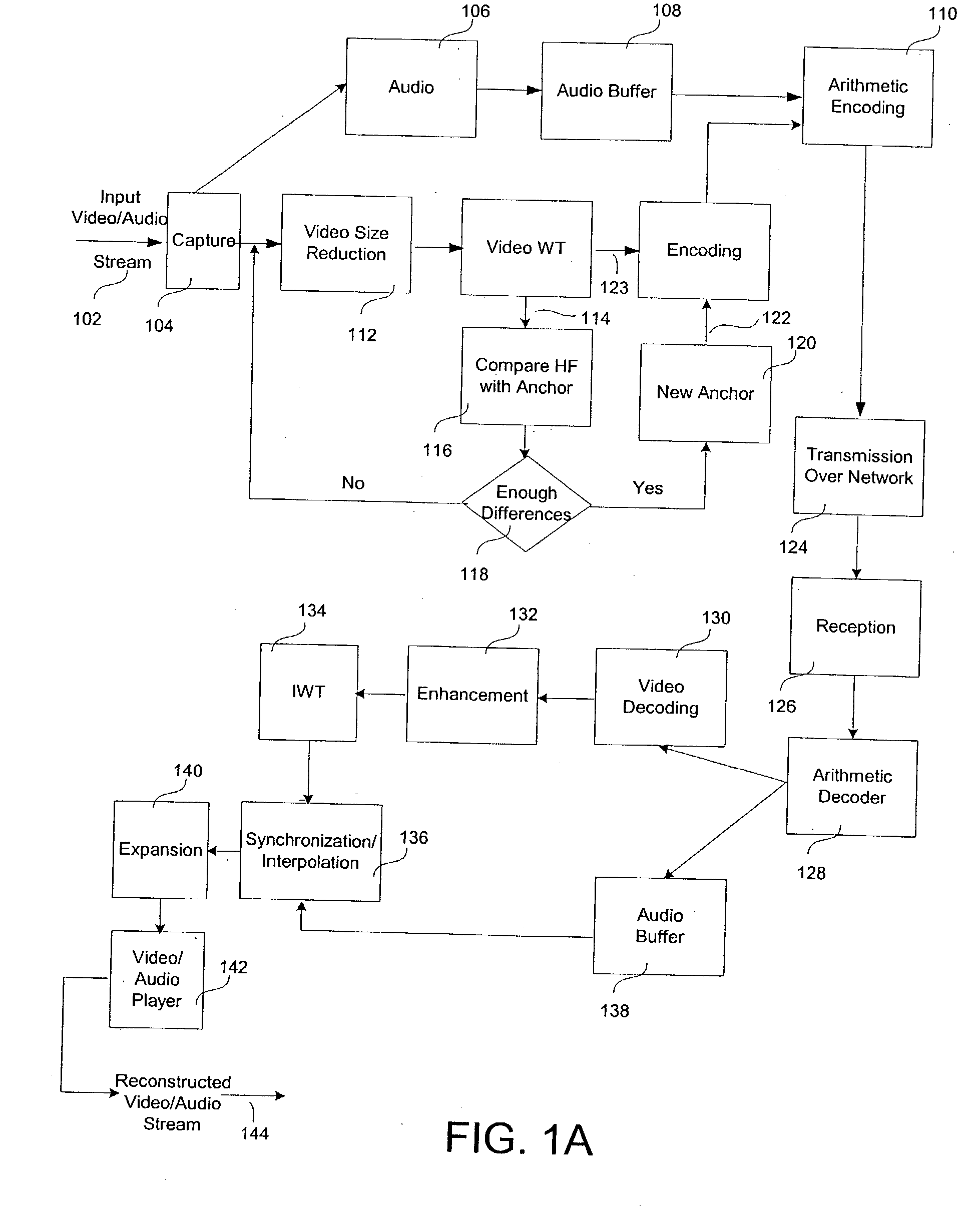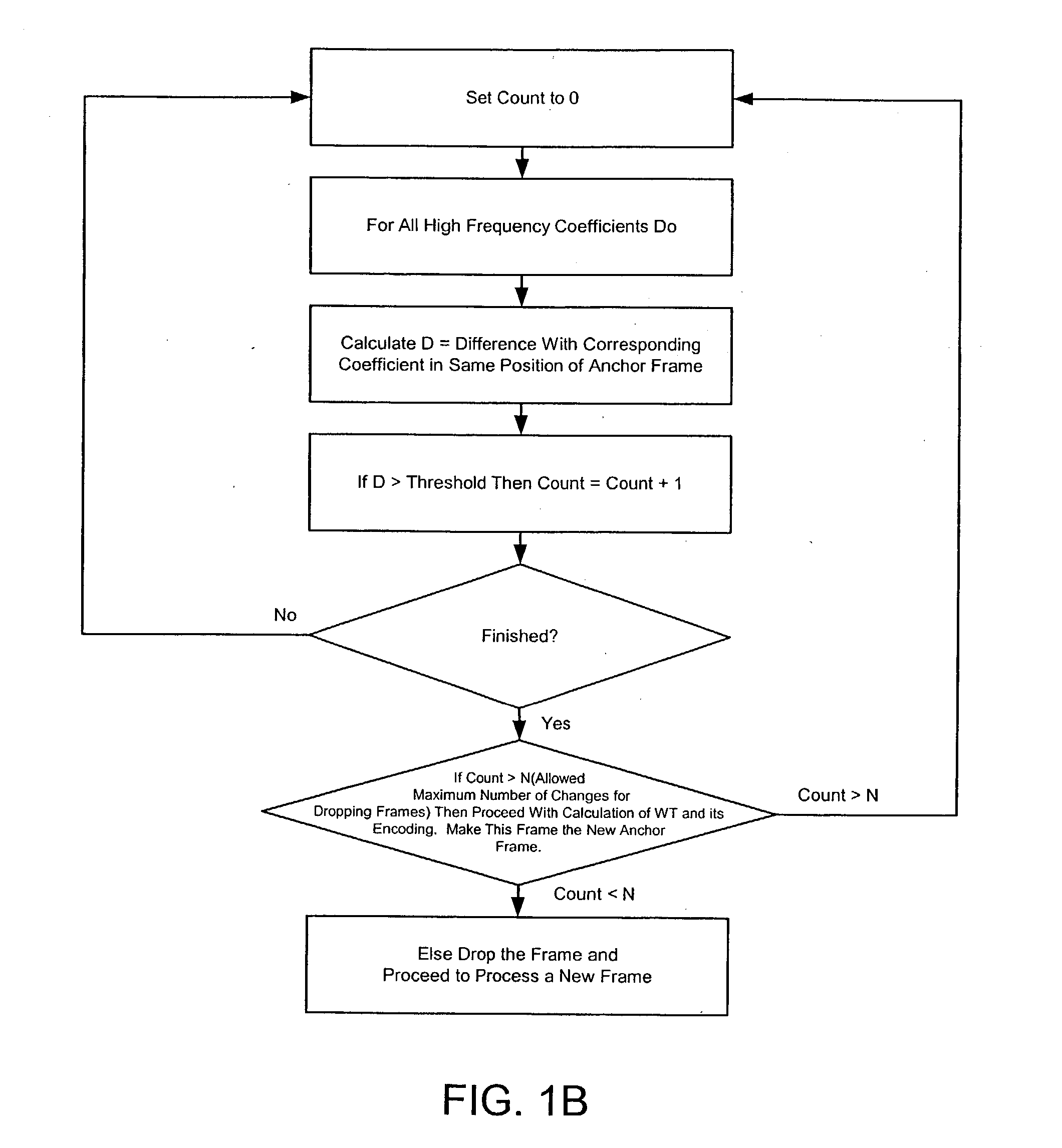Methods for real-time software video/audio compression, transmission, decompression and display
a software video/audio and real-time technology, applied in the field of methods, can solve the problems of limited market demand, inability to deliver quality video in real-time at a reasonable cost over the internet, and inability to meet the requirements of cable tv quality, so as to improve the compression efficiency of video and reduce overhead, the effect of increasing the reliability of transmission
- Summary
- Abstract
- Description
- Claims
- Application Information
AI Technical Summary
Benefits of technology
Problems solved by technology
Method used
Image
Examples
Embodiment Construction
of Processing Steps
[0068] Based on the above general description of this methodology capable of providing such truly innovative demonstrated results, in this section the innovative steps that together result in such performance are discussed in detail.
[0069] A typical first step in network transmission is capture of audio and video signals, as described above. Then, a Video Size Reduction step can be carried out in which a certain number of pixels are dropped from the image. For example, if every second pixel is dropped per row and per column, only 1 / 4 of the original number of pixels remain to be encoded. Thus, the amount of transformation can be reduced. At the reconstruction side, the dropped pixels can be recreated by high quality enlargement.
[0070] A. Selection of Wavelet Basis
[0071] Wavelet filters used in and recommended by this methodology include asymmetrical filters of the type described in "Sub-band Coding of Images Using Asymmetrical Filter Banks", O. Egger, W. Li, IEEE ...
PUM
 Login to View More
Login to View More Abstract
Description
Claims
Application Information
 Login to View More
Login to View More - R&D
- Intellectual Property
- Life Sciences
- Materials
- Tech Scout
- Unparalleled Data Quality
- Higher Quality Content
- 60% Fewer Hallucinations
Browse by: Latest US Patents, China's latest patents, Technical Efficacy Thesaurus, Application Domain, Technology Topic, Popular Technical Reports.
© 2025 PatSnap. All rights reserved.Legal|Privacy policy|Modern Slavery Act Transparency Statement|Sitemap|About US| Contact US: help@patsnap.com



